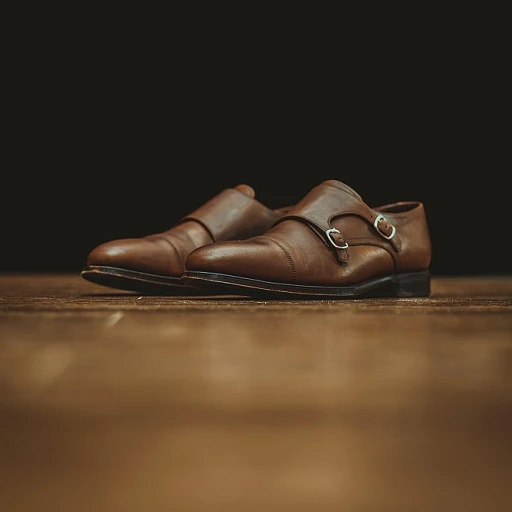
The Rise of Upcycling in the Luxury Leather Sector
The Emergence of Upcycling in High-End Fashion
The trend of upcycling in the realm of high-end leather goods is rapidly gaining traction, heralding a transformative shift in the industry's approach to sustainability. Once a niche concept, upcycling has found its stride, with luxury brands recognizing its potent combination of ethical consideration and unique aesthetic. According to recent studies, the luxury resale market, a cornerstone of upcycling, is projected to reach $64 billion by 2025, signalling the increasing inclination towards circular fashion models among discerning consumers. This ascent of upcycled luxury is not merely a fleeting trend but a crucial pivot towards a more responsible and resource-efficient luxury landscape.
Intersecting Luxury and Responsbility: The Upcycled Narrative
Integral to the allure of upcycled luxury leather goods is the narrative woven into every piece. Exclusive stories of heritage and craftsmanship are paramount in luxury branding, and upcycling enriches this narrative by adding layers of environmental stewardship and innovative design. Upcycled leather pieces each come with a unique provenance, speaking not only to the consumer's taste but also to their consciousness. As eloquently stated by leading fashion houses, 'The beauty of upcycling lies in its duality of heritage and innovation.' This confluence of past and present, tradition, and transformation, engenders a new kind of luxury that resonates with today's values-driven clientele.
Cost-Effectiveness Meets Sustainable Opulence
The economic incentives for incorporating upcycled materials in the manufacturing of luxury leather goods are increasingly compelling. By repurposing high-quality leather offcuts and retired products, brands can significantly reduce production costs while simultaneously addressing environmental concerns. For example, a recent industry report highlighted that upcycling can lead to a reduction in material costs by up to 20%, offering a financially attractive proposition for luxury brands seeking to optimize their operations without compromising on quality. By integrating upcycling, brands not only cater to the eco-conscious market but also leverage cost efficiencies to refine their financial performance.
Overcoming Obstacles in Upcycled Craftsmanship
Despite its numerous benefits, the upcycling process in leather goods manufacturing presents several challenges. The variability and availability of upcycled materials can pose difficulties in quality control and scalable production. However, innovative solutions are emerging. Cutting-edge technology, such as AI-powered material sorting and precise craftsmanship, ensures consistency and quality in upcycled luxury products. Brands that successfully navigate these challenges testify to the commitment to excellence and sustainability, stating, 'Each challenge in upcycling compels us to push the boundaries of innovation, ensuring that luxury and sustainability are not mutually exclusive.'
Lead the Revolution: Becoming an Upcycling Trendsetter
Acknowledging the pivotal role of luxury brands in setting industry standards, embracing upcycling positions a brand as a pioneer in the inevitable revolution towards sustainable luxury. It's a strategic move from merely participating in the eco-friendly discussion to leading it with actionable practices. Brands that have enthusiastically adopted upcycling have seen a significant boost in brand loyalty: a survey revealed that 70% of consumers have a more positive image of brands that take strong sustainability initiatives. By introducing upcycled collections, luxury leather goods companies can set the pace, transforming not only their product offerings but also the industry's ecological footprint while capturing the hearts of the modern, environmentally-conscious luxury consumer.
Crafting Stellar Stories: The Appeal of Upcycled Luxury
Embracing Sustainability: The Upward Trajectory of Upcycled Luxury
The luxury leather goods market has been experiencing a paradigm shift as sustainability becomes a cornerstone of modern refinement. A recent study indicates that sustainable practices are now a deciding factor for 73% of consumers when it comes to luxury purchases. With environmental stewardship at the forefront, upcycled leather emerges as the golden thread in the evolution of luxury. By redefining waste materials as valuable resources, brands are not only showcasing their creativity but also their commitment to ethical fashion.
In-depth analysis reveals that the upcycling movement within the luxury leather sector has grown in response to a more conscious and informed customer base. A 2022 report from the Circular Fashion Summit demonstrated a remarkable surge in demand for luxury items that tell a compelling story of environmental responsibility.
Refashioned Raw Materials: A Narrative of Artistry and Innovation
Going beyond mere aesthetics, today’s luxury aficionados yearn for leather goods that carry a message of positive impact. Artisans and designers alike are responding by crafting exquisitely upcycled pieces, weaving in the provenance of reimagined materials. Top-tier leather goods brands, armed with eloquence and a passion for sustainability, are thus creating contemporary classics by merging traditional craftsmanship with innovative design from reclaimed sources.
In this competitive market, strategic use of SEO keywords such as 'upcycled leather luxury', 'sustainable leather goods', and 'eco-friendly fashion', align well with the analytical discernment of eco-conscious consumers who use these terms in their online searches. When positioned correctly, these keywords can significantly boost the online visibility of luxury leather brands.
Economic Elegance: The Financial Impetus for Recycled Luxury
Elevating the Narrative: How Upcycled Luxury Tells a Unique Story
The evolution of luxury leather goods brings us to a crossroad where tradition meets innovation. The burgeoning interest in upcycled luxury leather goods isn't just a testament to environmental consciousness, but it’s also about weaving captivating stories into each meticulously crafted piece. A 2020 report by ThredUp indicated that the resale market for luxury goods is growing 11 times faster than traditional retail clothing sectors. What does this mean for luxury leather brands? It's an opportunity to foster a deep connection with a new eco-conscious audience. Storytelling through upcycled materials is not only unique but also personal. Each blemish and seam tells a tale of transformation that appeals directly to the emotional quotient of the buyer, setting these pieces apart in a crowded marketplace.
From Worn to Wow: Celebrating the Journey of Upcycled Luxe
Fashion icons and trendsetters are now flaunting upcycled leather goods that boast a rich heritage and an embellished future. It’s about adding a layer of luxury to sustainability. Take for example the iconic British fashion house, Alexander McQueen, known for its commitment to sustainable fashion, which often incorporates upcycled materials into its collections. By presenting a product that is not only exclusive but also eco-friendly, brands can attract the discerning customer who is looking to make a statement with their fashion choices – a powerful differentiator in a highly competitive market.
Exclusive Yet Inclusive: How Upcycled Leather Bridges Luxury with Consciousness
One of the most powerful statistics in luxury branding is the consumer shift towards sustainable products. Nielsen reports that 73% of global consumers are willing to change their consumption habits to reduce environmental impact. Upcycled leather luxury goods not only cater to this growing demand but also enhance the brand's reputation. By ensuring the exclusivity of the materials – each having its own history and character – luxury brands are creating a new niche. This philosophy towards upcycling helps to redefine what luxury means – transitioning from purely opulent to responsibly refined.
Overlaying the Old with the New: Innovative Designs Pioneering the Upcycled Movement
While there’s a clear environmental and ethical quest driving the upcycled movement, innovation in design is crucial for breathing new life into repurposed materials. Designers are tasked with the challenge of balancing the old with the new, creating pieces that are at once familiar yet surprisingly contemporary. Innovations in upcycled luxury leather goods are not just about aesthetics but also entail pioneering new techniques that transform vintage materials into avant-garde designs. Such creativity not only propels the movement forward but also showcases that upcycling can be synonymous with luxury and sophistication.
Challenges and Solutions in the Upcycling Process
Economic Advantages of Upcycled Luxury
In the realm of luxury leather goods, the move towards upcycling is not merely an environmental statement but also a savvy economic strategy. Statistical evidence supports the financial benefits, with the global market for upcycled fashion estimated to have a valuation of about $5 billion by 2025, indicating significant growth potential for luxury brands that pivot towards sustainability (Statista). By adopting upcycled materials, brands can not only position themselves at the forefront of an eco-conscious movement but can significantly reduce production costs. Savings arise from utilizing existing materials, which verge on a reduction of raw material costs by up to 20-30% per unit compared to traditional sourcing methods.
Boosting Profit Margins through Sustainability
Transitioning to upcycled materials impacts the bottom line in a positive manner. The reuse of luxury leather offcuts can bolster profit margins, since these high-quality materials would otherwise be discarded. Indeed, a study by thredUP suggests that resale can offer margins as high as 40% in the luxury category, a statistic which reinforces the financial upside of upcycling (thredUP). Moreover, embracing upcycling can attract a growing demographic of eco-minded consumers, whose spending habits are increasingly influenced by sustainable practices. This shift in consumer values is a clear economic signal for luxury leather goods companies to innovate towards greater sustainability.
Creating Value from Surplus
- Cost Reduction: Leverage surplus to mitigate procurement expenses and enhance the brand's profit model.
- Resource Efficiency: Optimize material utilization, reducing ecological footprint and aligning with global sustainability goals.
- Customer Attraction: Capitalize on the rising consumer demand for eco-friendly products to expand market share.
Entrepreneurial Insights: Luxury Brands' Upcycling
Successful brands have already demonstrated the economic prudence of upcycling. For instance, luxury powerhouse Hermès has introduced its Petit h line, turning scraps into high-end products and showcasing the potential for profitability in recycled luxury (Hermès). Their approach provides an excellent blueprint for how luxury leather brands can rejuvenate their waste into worthy investments, simultaneously driving down costs and creating unique, desirable products that command premium prices.
"By redefining luxury as inextricably linked to sustainability, we not only enhance our brand ethos but also activate new revenue streams," says a strategic analyst in the luxury leather goods industry. Harnessing the power of upcycling is not just about being green – it's about smart economics and visionary branding that reflects the ethos of contemporary luxury consumers.
Setting the Trend: Positioning Your Brand as an Upcycling Pioneer
Identifying Obstacles in Upcycled Leather Luxury
Revolutionizing the luxury leather industry with upcycling practices presents several challenges that brands must navigate. A significant obstacle is sourcing high-caliber upcycled materials that meet the stringent quality demands of luxury consumers. According to recent statistics, over 90% of luxury buyers expect superior quality and impeccable craftsmanship in their purchases. Brands have to balance the authenticity and history of upcycled materials while maintaining the excellence that their clientele expects. Tailoring intricate design narratives around existing imperfections can turn potential flaws into the quintessence of character and exclusivity, addressing the need for unique luxury leather goods.
Technological Innovations: Crafting Quality from the Old
Another key challenge lies in the technological realm. The transformation of recycled materials into luxurious leather goods demands cutting-edge technology and innovation. Luxury brands are investing in research and development to ensure that upcycled products do not compromise on quality. By utilizing state-of-the-art machinery, and innovative techniques, luxury leather goods can now incorporate upcycled materials without detracting from their allure. For instance, the use of 3D printing has surged notably, with a projected growth rate of 23.5% in the luxury fashion sector, suggesting that it could be pivotal in crafting high-end upcycled items.
Designing a Sustainable Supply Chain
The integrity of the supply chain is paramount for luxury brands venturing into upcycling. Consumers are increasingly aware of the ethical implications of their purchases, as evidenced by the surge in sustainable product searches, increasing by 47% in the last year. Brands must establish transparent supply chains that verify the origins and processes involved in re-purposing materials. This involves:
- Vetting suppliers for ethical practices.
- Implementing clear tracking and reporting standards.
- Ensuring consistent quality control throughout the supply chain.
By creating a sustainable supply chain, luxury leather goods brands can secure consumer trust and stand out in a competitive market.
Marketing with Meaning: Communicating the Upcycled Narrative
Embracing upcycling is not only an operational shift but also a strategic marketing movement. The power of story cannot be underestimated in selling upcycled luxury leather goods. Brands need to craft compelling narratives that resonate with consumers’ growing environmental consciousness. As much as 87% of consumers have a more positive image of companies that support social or environmental issues. Communicating the transformative journey of upcycled materials into luxury products can captivate the eco-savvy clientele and position a brand as a trendsetter. By harnessing the art of storytelling, brands mesh the patina of heritage with a forward-thinking ethos, redefining what modern luxury signifies.
-large-full.webp)
-large-teaser.webp)
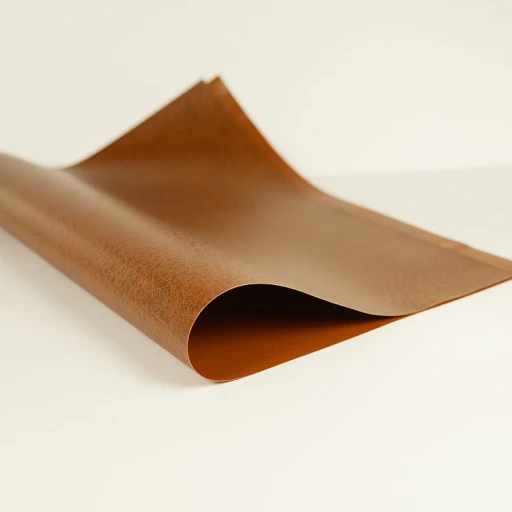
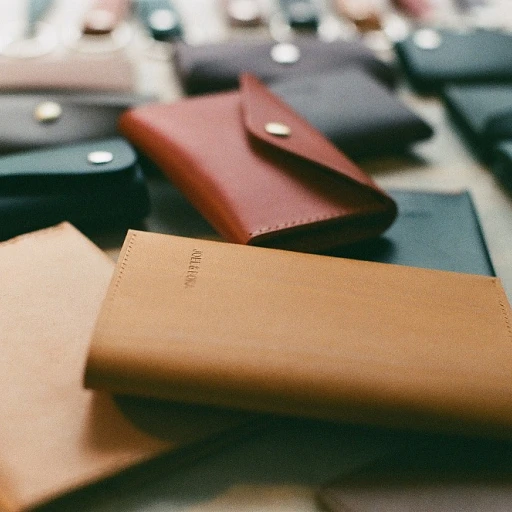
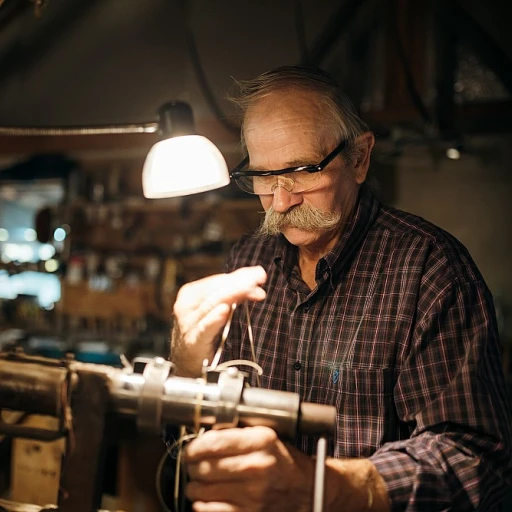
-large-teaser.webp)
-large-teaser.webp)
-large-teaser.webp)
-large-teaser.webp)
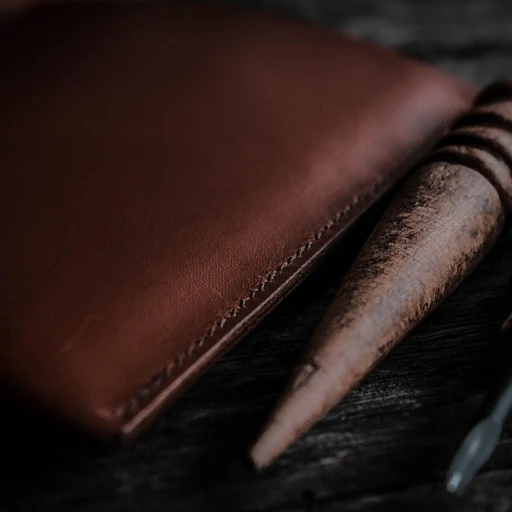
-large-teaser.webp)